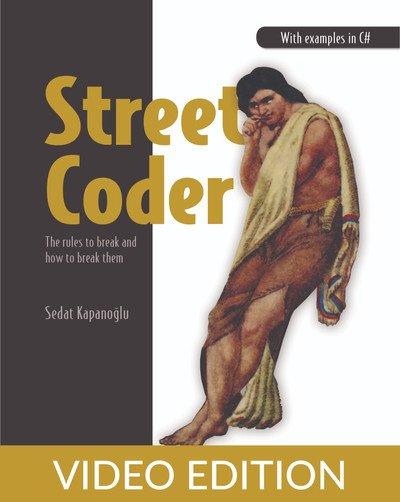English | MP4 | AVC 1280×720 | AAC 44KHz 2ch | 62 Lessons (8h 46m) | 1.12 GB
I’ve just finished the digital copy of this content-packed 274 pages of insightful technical guide and it definitely goes onto my list of useful sources for software developers, CS students, and even technical leads.
Asil Çetin-Aufricht, Team Lead, Software Development, KPMG Austria
Computer science theory quickly collides with the harsh reality of professional software development. This wickedly smart and devilishly funny beginner’s guide shows you how to get the job done by prioritizing tasks, making quick decisions, and knowing which rules to break.
In Street Coder you will learn:
- Data types, algorithms, and data structures for speedy software development
- Putting “bad” practices to good use
- Learn to love testing
- Embrace code breaks and become friends with failure
- Beginner-friendly insight on code optimization, asynchronous programming, parallelization, and refactoring
Street Coder: Rules to break and how to break them is a programmer’s survival guide, full of tips, tricks, and hacks that will make you a more efficient programmer. It takes the best practices you learn in a computer science class and deconstructs them to show when they’re beneficial—and when they aren’t!
This book’s rebel mindset challenges status quo thinking and exposes the important skills you need on the job. You’ll learn the crucial importance of algorithms and data structures, turn programming chores into programming pleasures, and shatter dogmatic principles keeping you from your full potential. Welcome to the streets!
Fresh-faced CS grads, bootcampers, and other junior developers lack a vital quality: the “street smarts” of experience. To succeed in software, you need the skills and discipline to put theory into action. You also need to know when to go rogue and break the unbreakable rules. This book is your survival guide.
Street Coder teaches you how to handle the realities of day-to-day coding as a software developer. Self-taught guru Sedat Kapanoğlu shares down-and-dirty advice that’s rooted in his personal hands-on experience, not abstract theory or ivory-tower ideology. You’ll learn how to adapt what you’ve learned from books and classes to the challenges you’ll face on the job. As you go, you’ll get tips on everything from technical implementations to handling a paranoid manager.
Table of Contents
1 To the streets
2 Great street coders
3 The problems of modern software development
4 The black boxes of technology
5 Themes
6 Practical theory
7 Inside data structures
8 Array
9 Dictionary
10 What’s the hype on types
11 Proof of validity
12 Don’t framework hard, framework smart
13 To be nullable or non-nullable Part 1
14 To be nullable or non-nullable Part 2
15 Better performance for free
16 Useful anti-patterns
17 Isolating common functionality
18 Write it from scratch
19 Fix it, even if it ain’t broke
20 Do repeat yourself
21 Invent it here
22 Don’t use inheritance
23 Don’t use classes
24 Write bad code
25 Don’t write code comments
26 Tasty testing
27 How to stop worrying and love the tests
28 Don’t use TDD or other acronyms
29 Deciding what to test
30 Let the compiler test your code
31 Eliminate valid value checks
32 Rewarding refactoring
33 Identify the components
34 Refactor to make refactoring easier
35 Reliable refactoring
36 Security by scrutiny
37 Threat modeling
38 Write secure web apps
39 Don’t implement your own security
40 SQL injection attacks
41 Cross-site scripting
42 Draw the first flood
43 Storing secrets
44 Keeping secrets in source code
45 Opinionated optimization
46 Anatomy of sluggishness
47 Nested loops
48 Breaking the bottle at the neck
49 Be predictable
50 1s and 0s of IO
51 Modern asyncawait
52 Palatable scalability
53 Don’t use locks
54 Embrace inconsistency
55 Don’t cache database connections
56 Don’t use threads
57 Respect the monolith
58 Living with bugs
59 The error terror
60 Don’t catch exceptions
61 Resiliency without transactions
62 Don’t debug
Resolve the captcha to access the links!
